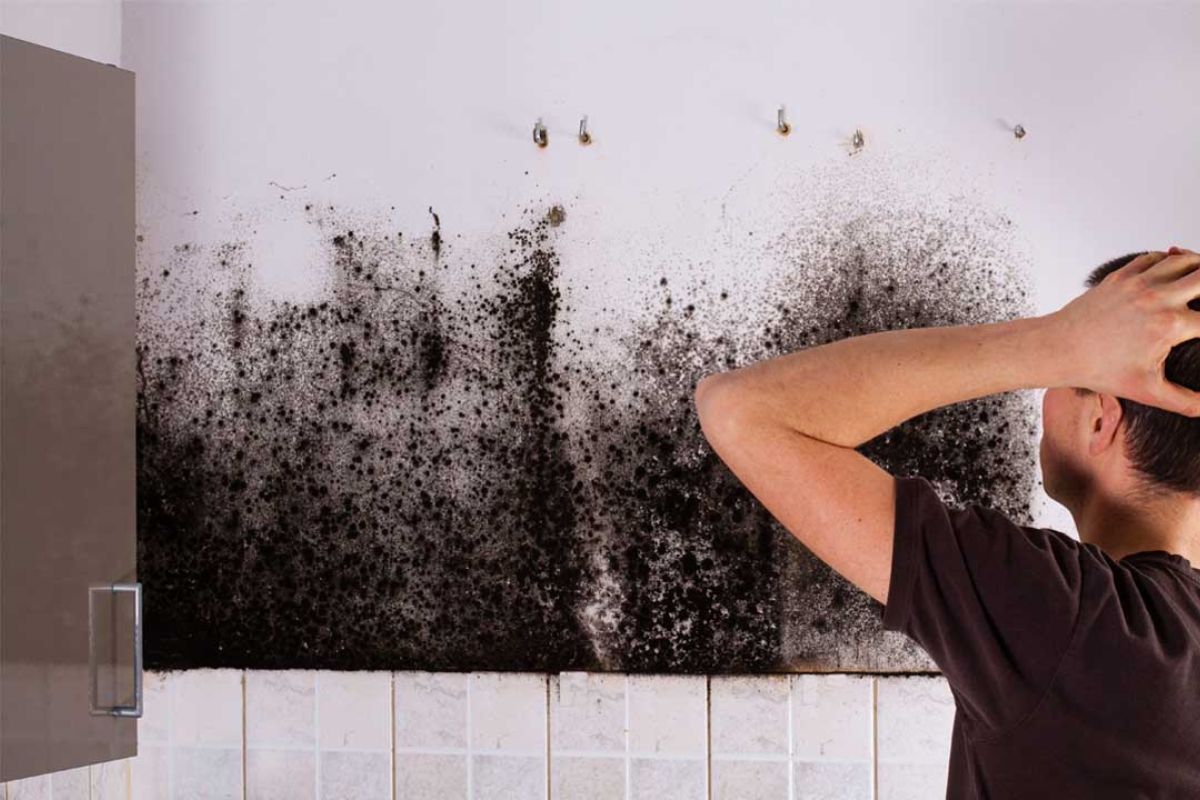Black mold is a common issue in many households and can be both an eyesore and a health risk if not addressed properly. In this post, we’ll cover what causes black mold, why it forms, and how to safely eradicate it from your home. Whether you’re looking to prevent mold growth or tackle an existing problem, understanding the basics is crucial for a healthier, mold-free living environment.
What Causes Black Mold?
Black mold, scientifically known as Stachybotrys chartarum, thrives in environments that are damp, humid, and poorly ventilated. Here’s a closer look at the main causes:
1. Moisture and Humidity
Black mold needs moisture to grow. Leaks from plumbing, roofs, windows, or even high humidity levels provide the ideal breeding ground. Homes in areas with high humidity, such as bathrooms, basements, and laundry rooms, are particularly vulnerable.
2. Poor Ventilation
Airflow plays a significant role in keeping spaces dry. Poorly ventilated areas trap moisture, which allows black mold to settle and spread. Closed-off areas with no windows or exhaust fans (such as small bathrooms and basements) are hotspots.
3. Water Damage
Leaks or flooding can lead to water damage, creating the perfect environment for black mold to take root. Mold growth can begin within 24-48 hours of exposure to water, making quick action essential. Materials like drywall, wood, and carpeting are particularly susceptible to mold growth after water exposure.
4. Organic Materials
Black mold feeds on organic materials like wood, paper, and dust. For instance, damp wood beams, wallpaper, and even household dust can encourage mold growth when moisture is present.
Health Risks of Black Mold
Black mold isn’t just an aesthetic problem; it can pose serious health risks, especially for people with allergies, asthma, or weakened immune systems. Health issues associated with black mold exposure include:
- Respiratory problems (coughing, sneezing, difficulty breathing)
- Eye irritation
- Skin rashes
- Headaches and fatigue
How to Safely Eradicate Black Mold?
While it can be tempting to tackle mold yourself, it’s important to prioritize safety. Here’s a step-by-step approach to safely remove black mold:
1. Wear Protective Gear: Before you start, put on gloves, a face mask, and safety goggles to protect yourself from mold spores. Long-sleeved clothing is also recommended.
2. Ventilate the Area: Open windows and doors to provide airflow and help prevent the spread of mold spores throughout the home. Fans can help but avoid directing them toward the mold, as this can spread spores.
3. Use Mold-Specific Cleaning Solutions: For small areas, a mixture of household cleaning solutions like vinegar or bleach can be effective. Spray the solution directly onto the mold, let it sit for 10-15 minutes, and scrub with a brush. Rinse the area thoroughly afterward. For larger mold infestations, it’s advisable to use specialized mold-removal products available at hardware stores.
4. Dispose of Contaminated Materials: Any materials contaminated by mold, like drywall, carpeting, or insulation, may need to be removed entirely. Seal these items in plastic bags and dispose of them according to local regulations.
5. Repair Leaks and Control Humidity: Fix any sources of moisture, such as leaks in plumbing or roofing. Use a dehumidifier in areas prone to moisture buildup, like basements, and regularly check for signs of water damage.
6. Seek Professional Help if Needed: If the mold covers a large area or if you have health concerns, hiring a professional mold remediation service is recommended. Professionals use specialized equipment to safely remove mold without spreading spores further.
Preventing Black Mold
Prevention is the best way to keep your home mold-free. Here are a few effective prevention tips:
- Control Indoor Humidity: Keep humidity levels below 60%, ideally between 30-50%. A dehumidifier can help in high-humidity areas.
- Ensure Proper Ventilation: Use exhaust fans in bathrooms and kitchens, especially after showering or cooking, to reduce moisture buildup. Keeping windows open when possible also helps maintain airflow.
- Fix Leaks Promptly: Regularly check your roof, walls, and plumbing for leaks. Even minor leaks can lead to mold growth if not addressed quickly.
- Clean and Dry Water-Prone Areas Regularly: Bathrooms, basements, and kitchens should be cleaned and dried frequently. Pay attention to small crevices where moisture might linger.
Final Thoughts
Dealing with black mold can feel overwhelming, but with the right steps, you can remove it safely and effectively. Remember, the key to a mold-free home is managing moisture levels and ensuring good ventilation.
By taking preventive measures and addressing mold issues quickly, you’ll maintain a safer and healthier living environment for yourself and your family.

